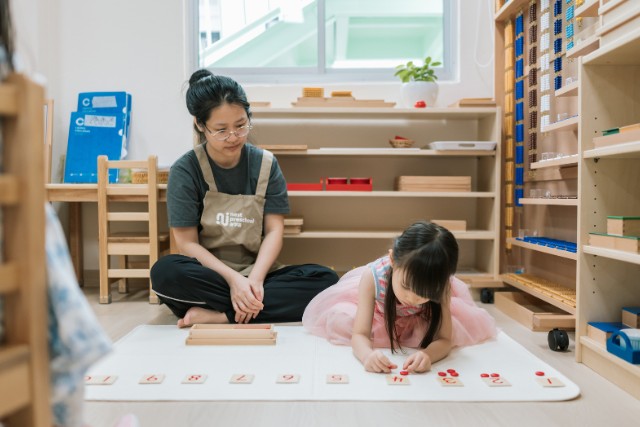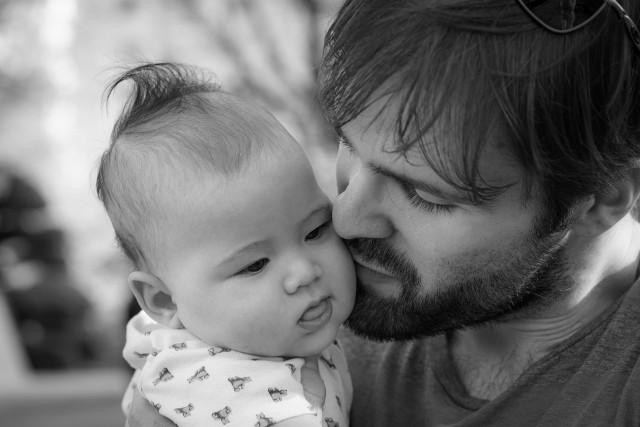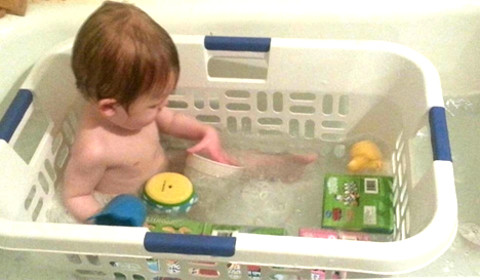It has always been emphasised to nurture a child to realise his or her potential. Besides honing their skills, and imparting knowledge to them, certain dispositions are required for them to reach their full potential. Many often talk about what that disposition or attitude may be.

Early Childhood Development Agency talks about PRAISE disposition. Habits of Mind mentions about 16 traits that are important attitudes. Underlying all these attitudes requires an emotionally confident child. How do I raise a happy and confident child? Well, the answer… By meeting the needs of a child.
So, what are the needs of a child? I’ll explain through A.B.C.
A is for ACCEPTANCE
Everyone desires acceptance for who they are. Do we accept our children for who they are? Including the good and the bad. Or can we only accept the child if he or she makes us look good? Is our “face” the main priority?
Accepting does not mean you agree with all the things your children do. When they make mistakes, we definitely would need to discipline them. But in the process of discipline, do we still show acceptance?
When we discipline, sometimes, we are quick to anger and become harsh in our words – “go away”, “get out of my sight” or “go to your room”.

Instead, in the process of discipline, as much as it consumes your emotional strength, we need to show acceptance. Amid a meltdown, be present and accept that emotions are part of being a human. You can say, “I’m here. I want to help you but I need you to talk to me. Are you ready?”
Do not leave. At some point, someone will budge. Make it your decision that the one who will outlast is YOU. It is a battle of “will”, so to speak.
By being there, you’re sending your child the message that “My mummy/daddy is here with me.” It is an emotional presence and it shows acceptance.
Standing physically beside your child but with no emotional engagement or eye contact will likely result in a bigger meltdown as they are trying to get your attention.
Little things in life show our acceptance of the child. When your child accidentally makes a mess, what is your first response? Accept that being somewhat clumsy is part of learning to be careful. Accept that it is part of life too! You can say in a calm voice, “Alright, we need to clean up. Can you help to clean it up?” The child is very likely to appreciate your response.
⇒ Related Read: 6 Ways To Get Kids To Clean Up On Their Own
The mess is already telling him/her that he/she has made a blunder. The calmness cannot happen without ACCEPTANCE. Accept yourself as an imperfect parent. Accept your child the way they are.
B is for BOUNDARY
Some parents are afraid of saying “no” to their children. They are afraid of stifling their children’s creativity or they may be afraid of their child’s response following “no”.
⇒ Related Read: Creating Creativity: 6 Bright Ideas To Spark Your Child’s Creativity At Home
But there are boundaries in this world! For one to thrive, it is essential to know which are the real boundaries and how to thrive within them. Boundaries give security. A country with law and order that is adhered to, is likely to have people who are more confident and comfortable.
Similarly, boundaries need to exist and they need to be enforced. When you set boundaries and follow them through, this gives your child security. These boundaries need to be consistent and not something that sways according to the child’s mood.
If the child insists on a certain spoon or cup and you think that it is creeping towards an unhealthy obsession, say “no”. Be firm and guide your child, “No, sweetheart. You can use this instead.”
Again, make sure the one who outlasts is YOU. If you do not outlast, the “will” of the child will only grow. How can I be calm, you ask? Acceptance. Accept that children have “will” in them and know that the “will” of the child needs to be managed at a young age or it will grow into something that may hurt them. Ask yourself what boundaries should be set.
Once you have decided, if and when your child challenges the boundary, enforce the consequences. The consequences should depend on the severity of the misbehaviour, what you are comfortable in meting out and whether they can affirm future deterrence from the misbehaviour.
If your consequence only sees the child smirking and laughing away, you may have chosen a wrong consequence. It needs to have sufficient deterrence. Deterrence does NOT mean having children quaking in fear of our authority.
Be very mindful in the enforcement of consequences that we do not bring out a sadistic mind of manipulating children to “listen to our every word” – like the ancient Chinese emperor to his subjects. That is our pride happening there.
With fair and consistent boundaries, your child will respect your authority as parents. As you administer consequences, make sure to explain why they have to be done. In short, you will explain what the boundary is, how the child did not follow, therefore, you will have to enforce the consequence.
Also, say this, “I do not want to ____(consequence)____, but if you choose to ______(misbehaviour)______, I will have to keep to the boundary and consequence which I told you about. Will you choose better next time? Mummy/Daddy still loves you. Can I hug you?”

The last two statements are very important as they reiterate our first point: A – Acceptance. It is a clear message to your children that even when they make a mistake, you still love and accept them.
C is for CHOICE
Choices have to be made and choices will be made whether we consciously or unconsciously choose them.

At a young age, you can begin offering your children small choices. Small choices can be made such as offering them a choice of two outfits. Do not overwhelm them with too many choices to make. When it is overwhelming, it can be unnerving and cause insecurity.
As they grow older, let them enjoy taking part in planning. It can be “Should we go to the park or swimming pool today?” For options that should not be compromised (like visiting grandparents or household chores), do not offer as a choice.
They can also choose noodles or rice on special weekends. If you do craft work at home, you can offer them a choice of materials. Making choices is empowering and it builds confidence. As children transit to primary school, do you know what they enjoy most? They get to choose what to do at recess. They get to choose what they want to eat. It makes them feel good about themselves.
Yet, at the same time, choices should be limited and then grow as the child becomes competent at making choices.
I hope you found the article helpful and do not feel discouraged. No one is born a perfect parent. If we make a mistake (e.g. reprimanding the child when he or she is actually in the right), we apologise. Make sure your apology does not become overused and insincere. As we grow in this parenthood journey together, we work towards what is ideal.
By Esther Eio.
Esther chose the Early Childhood industry after graduating from NUS in Psychology. Convinced by how precious the early years are, Esther has 12 years of early childhood experience in local and international settings. Along the years, she has written curriculum which has been implemented in Singapore, China and Panama. Esther is currently running her own curriculum company for preschools and work as Associate Lecturer at a local Polytechnic in the Early Childhood department.
* * * * *
Stay in touch! Subscribe to our Telegram here for all our latest updates.
Like what you see here? Get parenting tips and stories straight to your inbox! Join our mailing list here.



























































